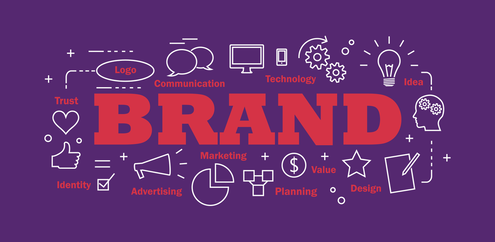How to create a visual brand identity for companies and influencersIt’s easy to dismiss brand identity as a minor detail in your online and print communications. After all, the filter you use on the images has virtually nothing to do with the services, products, or content that you offer. As a matter of fact, though, a consistent brand identity is more important than it might seem. Take any large, successful company or leading influencer as an example – study their marketing campaigns or Instagram content, and you’ll soon notice a common trend among the visual materials. What does ‘brand identity’ mean, why is it important, and how do you ensure it’s consistent across all communications? These are the questions we’re going to answer today. What is a brand identity and why does it matter? Your brand identity is essentially a reflection of how you want to be perceived by your customers. Through using consistent visual and verbal communication, you evoke specific values and sentiments that you want your brand to represent. Keep in mind that the word ‘brand’ doesn’t just refer to companies with physical products – branding is just as important for professional influencers and for service companies. A consistent brand identity means that your communications – whether they’re images, ads, or written content – are immediately identifiable as belonging to your brand. In essence, your brand identity is your signature style. When done in a measured, consistent way, brand identity projects professionalism, builds trust with customers or audiences, and helps to reassert your brand’s values. Elements of the visual brand identity In a world where visual content is so important and widespread, you want your images to stand out and be unique to your brand. Verbal brand identity – your well-defined values and mission statements, the vocabulary you use across your advertising, and how your brand describes yourself – is just as important to get right. But on the internet especially, first impressions matter most – and the visuals of your branding will be the first thing catches your audience’s attention. The key components of a visual identity are:
Most companies enlist the help of a PR agency and/or a graphic designer to create brand guidelines. That’s because the process involves a series of decisions that will have an impact on all future communications and on how the brand is perceived. It’s important to ensure that the key elements of your visual identity are not only consistent in terms of where they are used, but also in so far as creating a cohesive whole – the logo, colour scheme, images, and fonts need to make sense together. And as well as looking good, they also need to reflect your verbal brand identity (key messages and values) in some way. If you work in a team rather than alone – as many influencers do – it’s a good idea to create a folder with brand guidelines. This should include your logo in various dimensions, the hex (or RGB) codes of your brand colours, font names and usage, and any other necessary information. It’ll be a big help in ensuring that everyone on your team is using the same brand guidelines, increasing consistency. Last but not least, remember that ‘consistent’ doesn’t mean ‘forever’. Trends in marketing, branding, PR, and graphic design change really quickly these days, so it’s a good idea to review your visual branding on a regular basis. The visuals are unlikely to need a complete overhaul – unless you’re shifting your values or want to change your branding. Most of the time, just slight visual updates will suffice to ensure that your visual branding doesn’t look outdated. Read Now  It’s easy to dismiss brand identity as a minor detail in your online and print communications. After all, the filter you use on the images has virtually nothing to do with the services, products, or content that you offer. As a matter of fact, though, a consistent brand identity is more important than it might seem. Take any large, successful company or leading influencer as an example – study their marketing campaigns or Instagram content, and you’ll soon notice a common trend among the visual materials. What does ‘brand identity’ mean, why is it important, and how do you ensure it’s consistent across all communications? These are the questions we’re going to answer today. What is a brand identity and why does it matter? Your brand identity is essentially a reflection of how you want to be perceived by your customers. Through using consistent visual and verbal communication, you evoke specific values and sentiments that you want your brand to represent. Keep in mind that the word ‘brand’ doesn’t just refer to companies with physical products – branding is just as important for professional influencers and for service companies. A consistent brand identity means that your communications – whether they’re images, ads, or written content – are immediately identifiable as belonging to your brand. In essence, your brand identity is your signature style. When done in a measured, consistent way, brand identity projects professionalism, builds trust with customers or audiences, and helps to reassert your brand’s values. Elements of the visual brand identity In a world where visual content is so important and widespread, you want your images to stand out and be unique to your brand. Verbal brand identity – your well-defined values and mission statements, the vocabulary you use across your advertising, and how your brand describes yourself – is just as important to get right. But on the internet especially, first impressions matter most – and the visuals of your branding will be the first thing catches your audience’s attention. The key components of a visual identity are:
Most companies enlist the help of a PR agency and/or a graphic designer to create brand guidelines. That’s because the process involves a series of decisions that will have an impact on all future communications and on how the brand is perceived. It’s important to ensure that the key elements of your visual identity are not only consistent in terms of where they are used, but also in so far as creating a cohesive whole – the logo, colour scheme, images, and fonts need to make sense together. And as well as looking good, they also need to reflect your verbal brand identity (key messages and values) in some way. If you work in a team rather than alone – as many influencers do – it’s a good idea to create a folder with brand guidelines. This should include your logo in various dimensions, the hex (or RGB) codes of your brand colours, font names and usage, and any other necessary information. It’ll be a big help in ensuring that everyone on your team is using the same brand guidelines, increasing consistency. Last but not least, remember that ‘consistent’ doesn’t mean ‘forever’. Trends in marketing, branding, PR, and graphic design change really quickly these days, so it’s a good idea to review your visual branding on a regular basis. The visuals are unlikely to need a complete overhaul – unless you’re shifting your values or want to change your branding. Most of the time, just slight visual updates will suffice to ensure that your visual branding doesn’t look outdated. Comments are closed.
|
- Home
- Team
- Tik Tok
- Instagram & FB Verification
- Verified Instagram Accounts
- Instagram Usernames & Brokerage
- Verified Instagram Username Change
- Celebrity Instagram Growth Giveaways
- Verified Instagram Accounts With Desired Username
- Recover Disabled or Hacked Accounts
- Linkedin Username Claim Service
- Acquire Premium Accounts
- YouTube Verification
- Instagram Ban Service
- Twitter Verification
- Become a Forbes Contributor
- Write For Entrepreneur.com
- Verified Twitter Username Change
- Verified Facebook Page With Desired Username
- Instagram Growth
- Reputation Management
- Snapchat Verification
- Famous Birthdays
- Wikipedia Page Creation
- Google Knowledge Panel
- Spotify promotion
- Google News Approval Service
- PR for Influencers & Content Creators
- PR for Brands & Startups
- PR for Crypto, Blockchain & DeFi Companies
- PR for Musicians & Artists
- Partner Program
- Careers
- Blog Articles
- Clients
- Contact
Contact
Only Official Email Address [email protected]Always email directly via our official email to make sure you're liaising with us!
|
|



